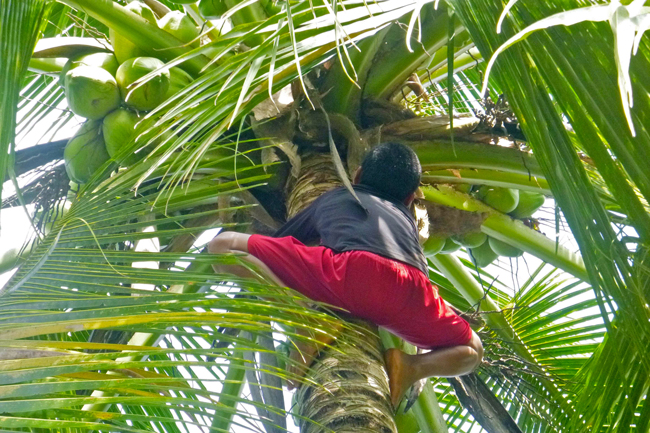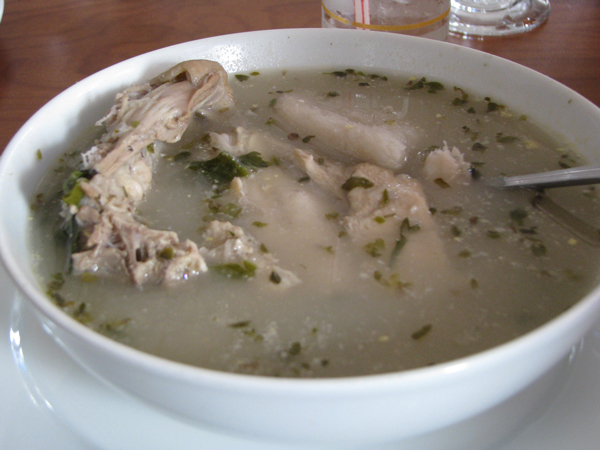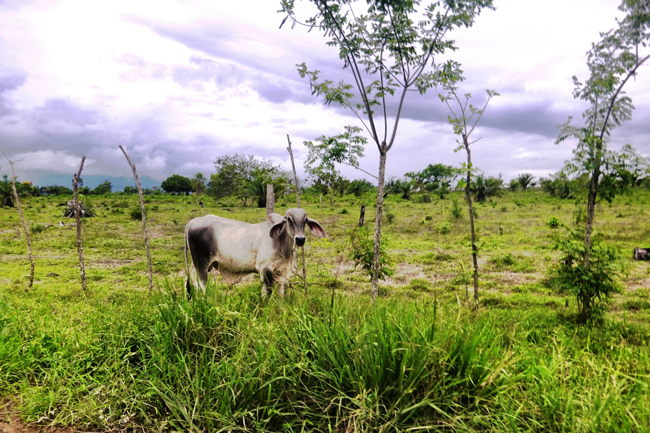
By Kathleen Spencer and Sebastien Belliard
One of the most appetizing aspects during our fieldwork of mapping agricultural land uses in Eastern Panama was actually the experience of living with local people. During our weeklong visits to various communities, we ate and slept with families or individuals gracious enough to let two strange gringos (Canadian is not a thing) in to their houses.
![Throughout our 3 months in the field we became known faces in the communities we frequently visited. Their faces and stories become better known by us as well, and thus we made friends with young, old, and those of our own age. [From left to right] Sebastian, Miguel, and Kathleen at the First International Film Festival Closing Ceremony in Pirati. /](https://reporter.mcgill.ca/wp-content/uploads/2014/03/Lasting-friendships.web_.jpg)
Food was obviously central for us. Walking up and down the Pan-American Highway, trekking over broken roads and through fields under the beating tropical sun is a good way to get hungry. Every bit of nourishment was a wonder.
Once the novelty wore off – which didn’t take long – it was easier to get a sense of what the daily diet looks like. Every morning it was eggs and hojaldras, one two or three pieces of fried wheat dough (think salty beaver tail, plain and simple, just out of the fryer) with a good ol’ slice of processed cheese or fried hot dogs or oil-drippin’ fried eggs.

As the day moved along, the chicken surpassed the egg. With so many chickens pecking about everywhere it’s no surprise that chicken is the star of most meals. A favourite somehow, despite the constant 35-40oC plus humidity weather, is sancocho, a deliciously warm, salty soup that wafts through the air as it simmers throughout the morning.
Typically, an eastern Panamanian bowl of sancocho consists of a juicy chicken part along with a couple large chunks of yuca (melt-in-your-mouth, smushy, better-than-potato cassava), a few sprigs of culantro (dandelion-like-leaf, tastes like cilantro), if you’re lucky a few vegetable bits (a bell pepper slice, or chuck of corn) and a big plate of rice. Amazing. Who knows exactly how hot soup becomes a craving in the sweltering heat… something something electrolytes: salt was sweet!
Unfortunately, sancocho was not the most common fare. The expansion of our culinary borders continued as we edited our lists of never-have-I-ever or never-will-I-ever. Chicken gizzard with rice, fried pork pieces with rice, more mysterious meat with rice, and it will be hard to forget how we swallowed our unease with fried spam… with rice.
As we moved further east, fried plantain patacones dethroned rice as carb champion. Superabundant, we walked through cultivated plantain forests, with plants over five metres high dangling massive bunches. Plantains are abundant in home gardens and agricultural plots, and it seemed to grow happily anywhere it was planted. It’s simple enough to cook up and almost every family with a patch of land had their own cluster of plantain shoots.

Abundance was all around us. Fruit trees were everywhere, and many live fences incorporated fruit, nut, or legume trees. In rural areas, people really do live off the land, and it’s easy to see that reflected in the way they shape the ecosystems around them. Which brings us nicely to the reason we were actually in Eastern Panama.
Land-use is a driving force by which human communities impact the environment. Most anthropogenic impact on key ecosystem processes and planetary systems are predominantly the result of land and water management. This is the case in the Upper Bayano watershed in Panama, as in too many other places in the world, where deforestation and land degradation threaten the stability of ecosystems that are vital to the people who live in them and to planetary stability. The complex social environment of the watershed and a history of conflict over land and water between groups in the area make for rough terrain to negotiate. If you’re interested in learning about what’s being done to navigate through the eco-social nexus of these existential challenges, check out McGill at work / au travail on Facebook to see what Dr. Catherine Potvin and her lab are doing in the world, on top of what they’re eating.
Kathleen Spencer is now combining her culinary experiences and field work from this summer into an independent study which analyzes colonist farmer’s prevailing and changing perceptions of land use and the resulting dietary deficiencies in the Upper Bayano Region of Eastern Panama. She is currently in her last semester as an undergradate in School of Environment’s Ecological Determinants of Population Health domain and has a minor in Psychology. She has been a student of tropical forest ecology Professor Catherine Potvin since January 2013 and has hopes of continuing such topics as land conflict, environmental and human health degradation, as well as their intertwined restoration, in the future.
Sebastian Belliard is a graduating student in Agro-environmental Science with a keen interest in the dynamics of civilizational collapse. He worked with Dr. Catherine Potvin and STRI in Panama, where he believes neo-liberal capitalism is unravelling the socio-ecological fabric.
